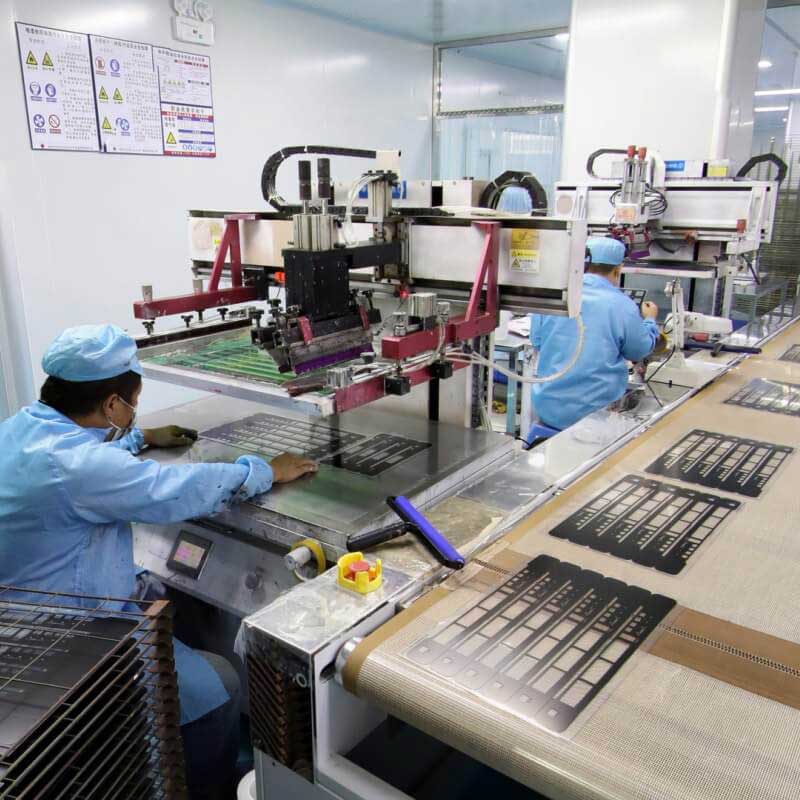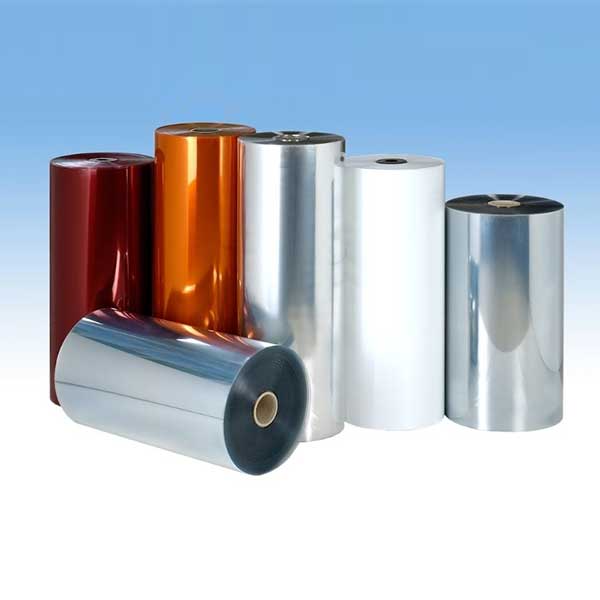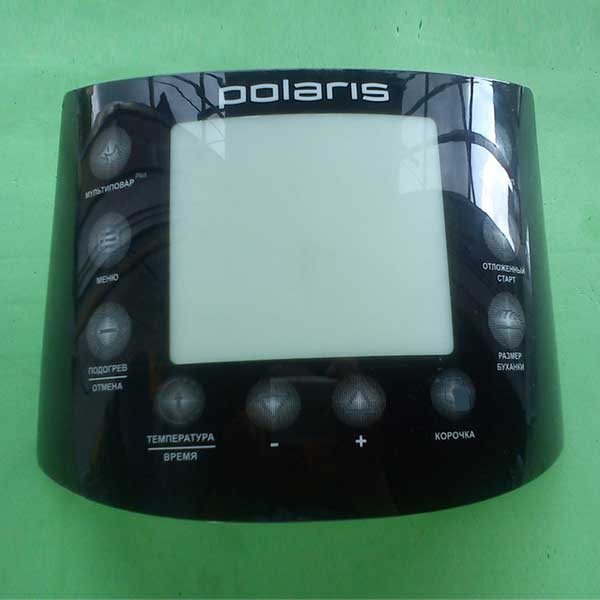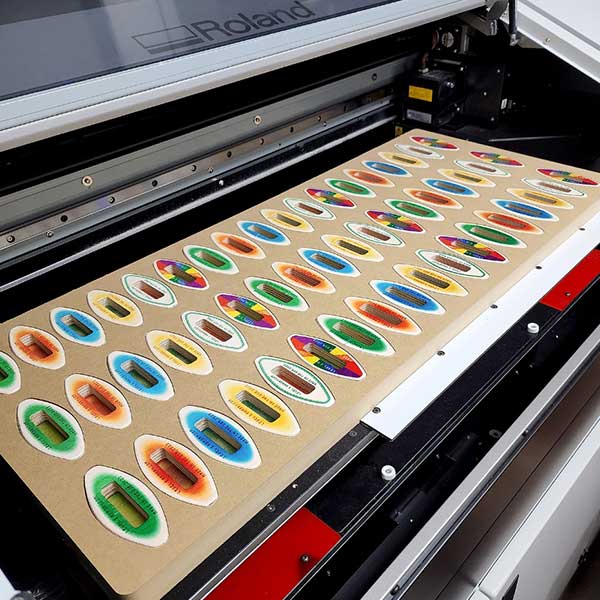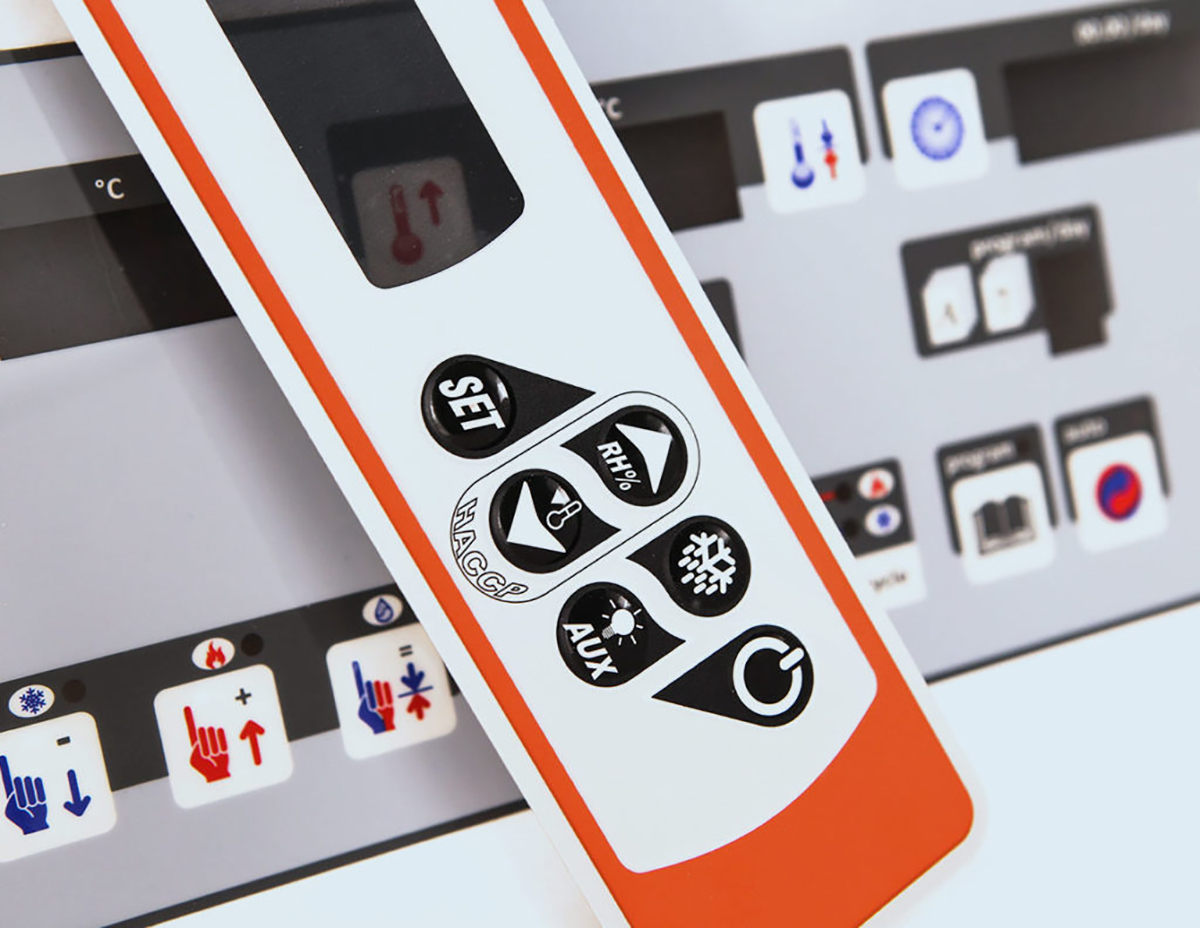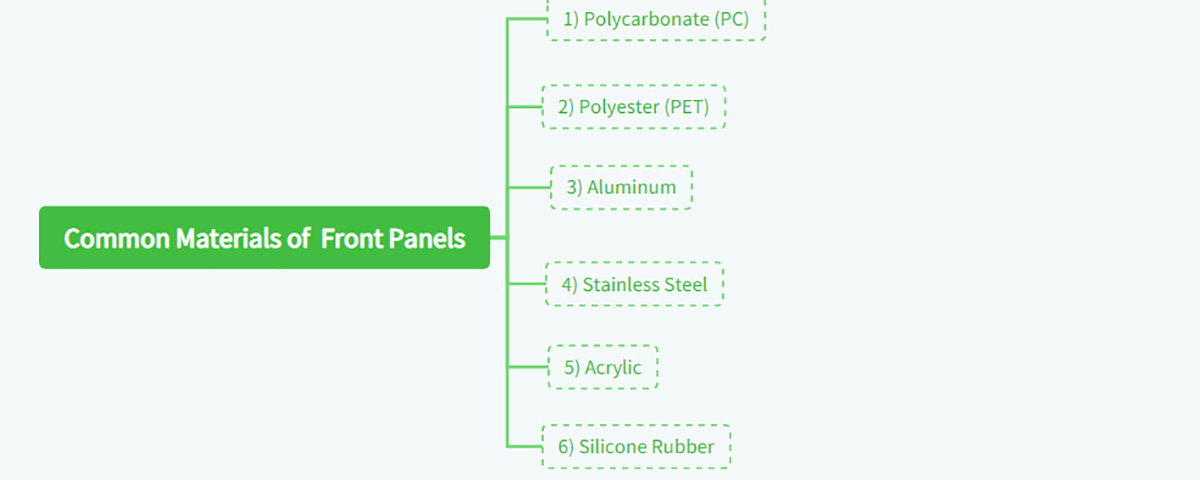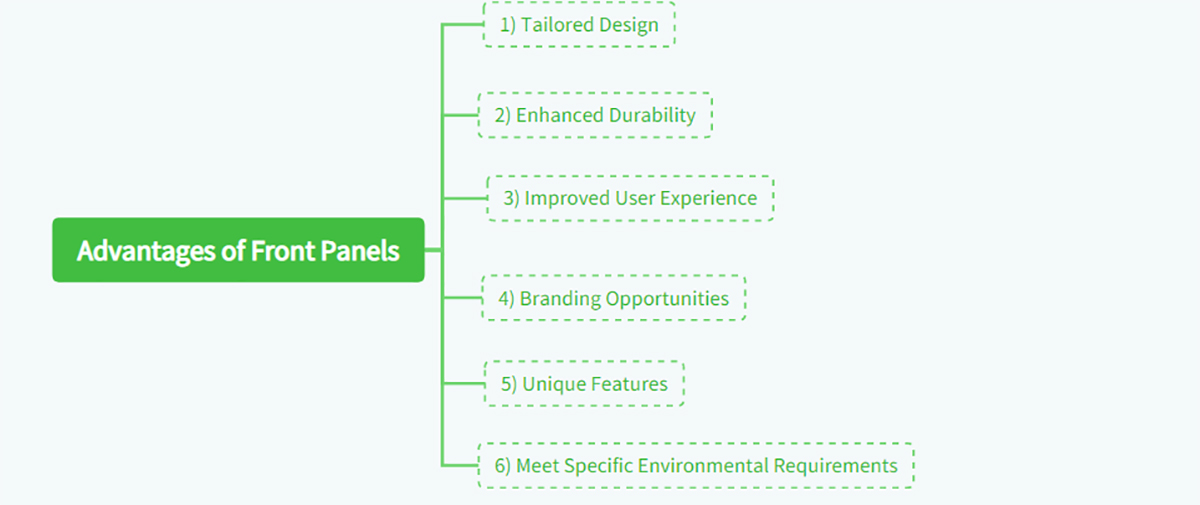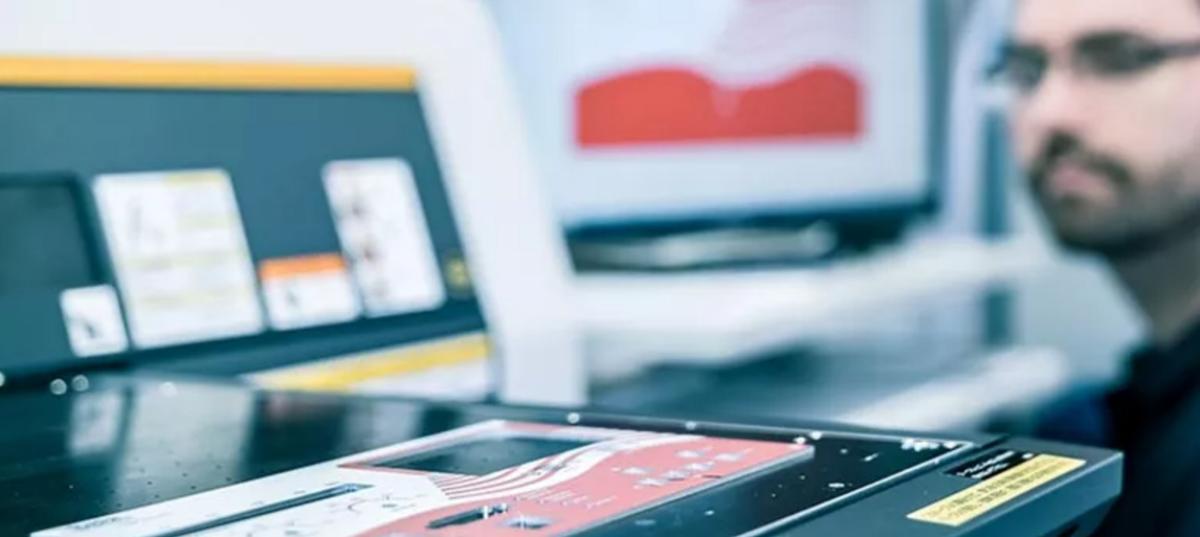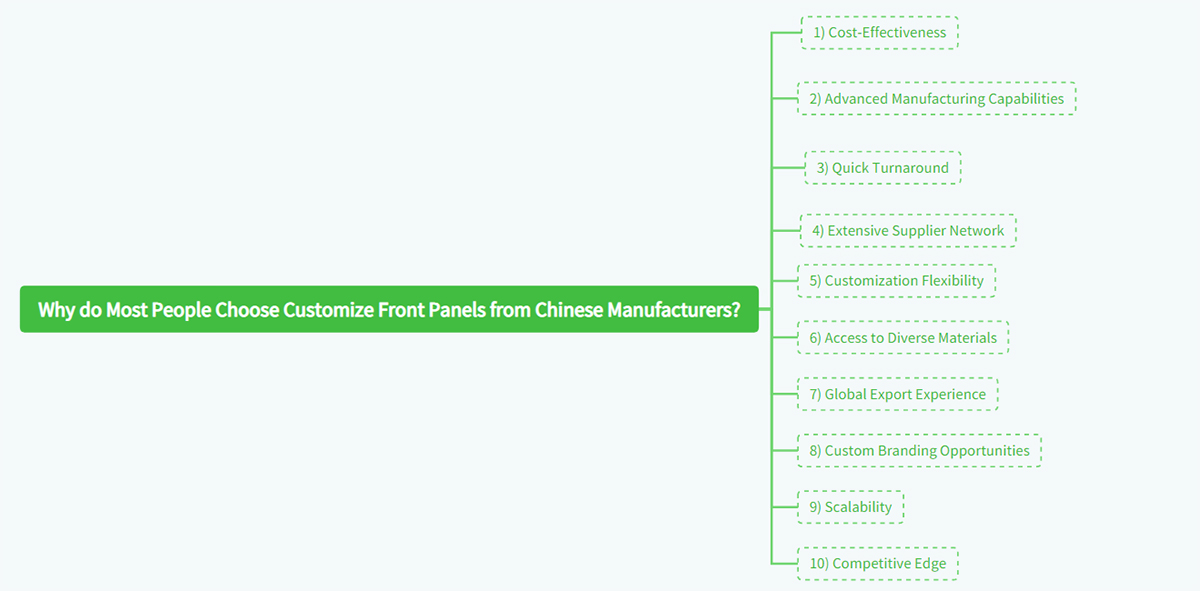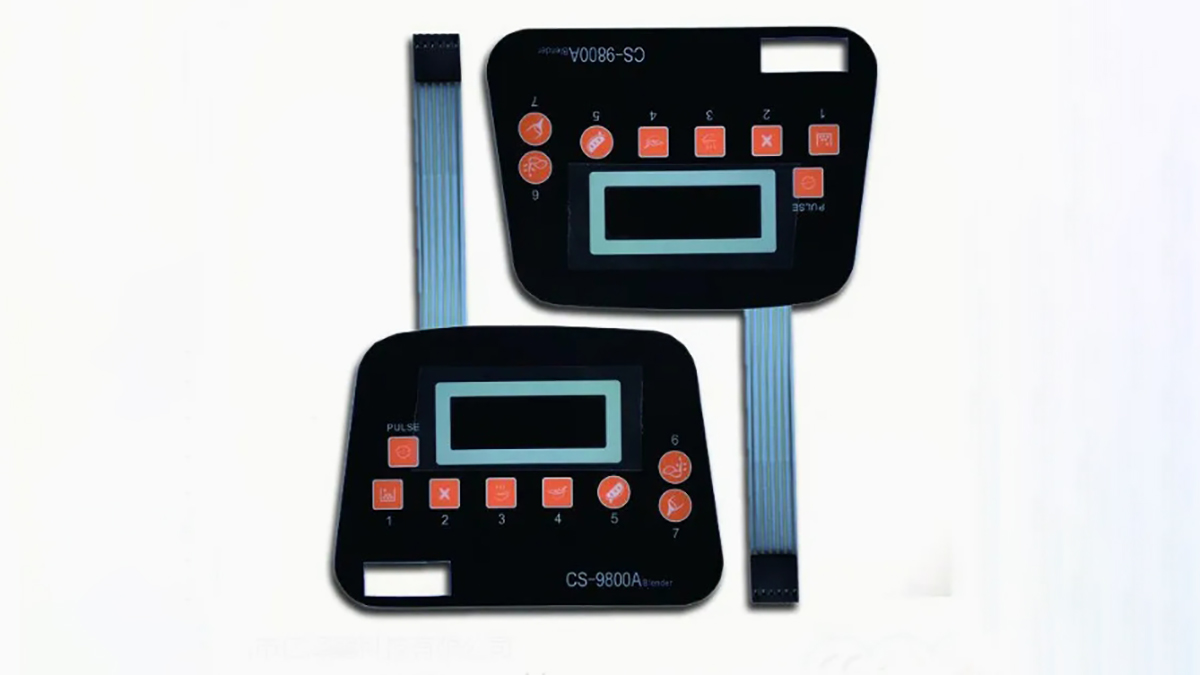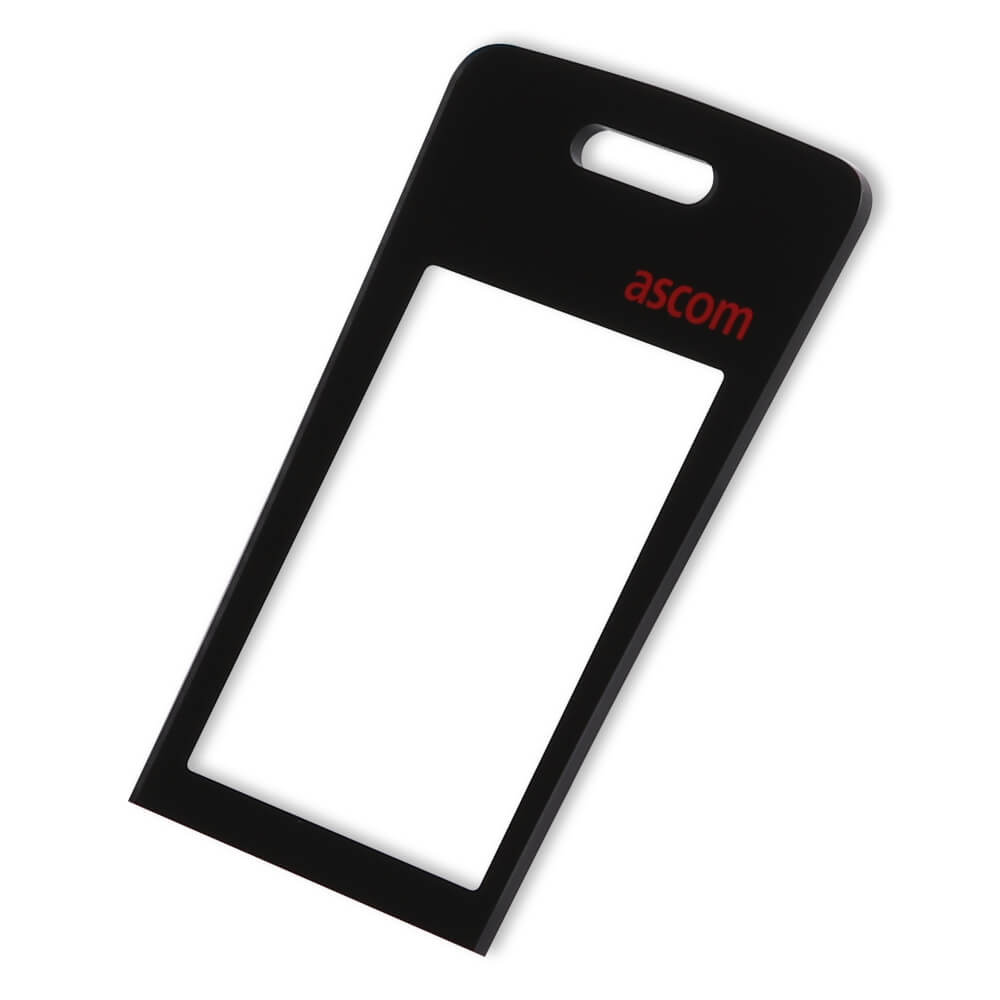
Custom Front Panels from MSTR
MSTR is a leading front panel producer in China, which has over 19 years of history to develop high-performance solutions for consumer electronics, industrial equipment, and medical equipment. Our high-quality front panels from polycarbonate and acrylic integrate buttons, displays, and control interfaces with utmost ease to enhance user interaction and operational efficiency.
At MSTR, we offer completely customizable front panel solutions to your precise specifications, such as color, graphics, thickness, layout, branding, and product differentiation. Designed for reliability and durability, our front panels endure extreme environments while keeping precision and visual appeal.
With an obligation of more than 300 clients annually, MSTR works with the world’s leading brands, including Lenovo, Huawei, Cisco, T&W, Haier, ZTE, and TCL. Our experience ensures your front panels not only enhance user experience but also enhance your product’s presence in the market.
Are you looking for a front panel manufacturer? MSTR is your trusted choice, integrating innovation, functionality, brand features and cutting-edge front panel solutions. Your front panel will become a reality step by step.
Featured Front Panels
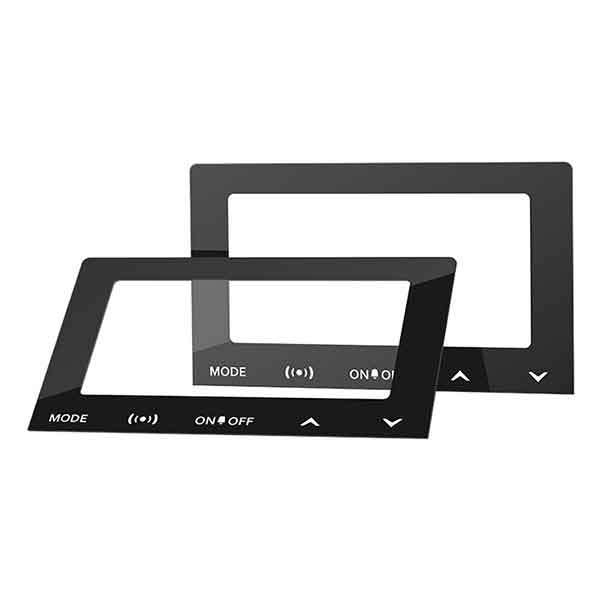
Acrylic Front Panel
MSTR provides high-accuracy acrylic front panels designed for longevity and optical clarity in a broad variety of applications. Our panels are suitable for custom printing, different thicknesses, and accuracy die-cutting to provide seamless integration with your devices.
Ideal for membrane keypads, safety labels, graphic overlays, signs, and instruction panels, our acrylic solutions offer excellent scratch resistance, optical clarity, and long-term performance in a broad variety of industrial and commercial applications.
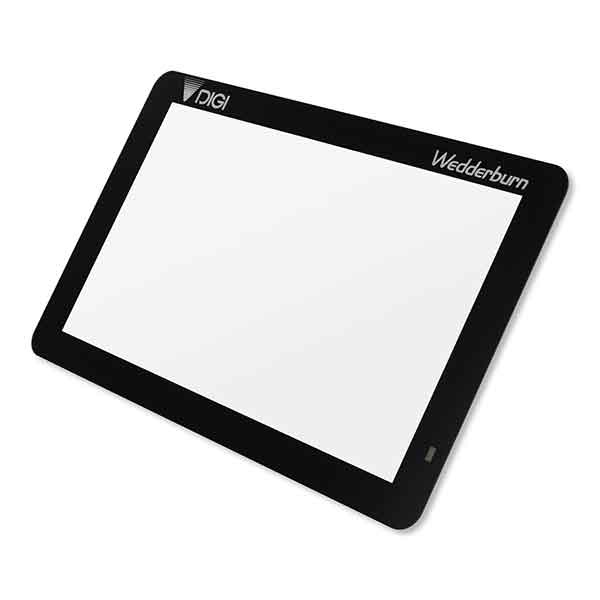
Glass Front Panel
MSTR offers premium glass front panels with silk-screen printing, high-precision CNC machining, and AG/AR/AF coatings for maximum durability and clarity.
Shielding and enriching electronic interfaces, our panels feature scratch resistance, anti-glare capabilities, and smooth touch sensitivity, making them perfect for smart devices, industrial controls, and display systems. Every panel goes through rigorous quality inspection to guarantee flawless performance.
Steps To Custom Front Panels
Design Creation
MSTR designs precision front panel designs, combining brand identity, functional configurations, and high-impact graphics for a premium look and feel.
Material Selection
At MSTR, we select high-performance materials like polycarbonate, glass and acrylic which have superior durability, optical clarity and longer product lives.
Printing
Using cutting-edge digital and screen printing, we offer clear, high-resolution graphics, vibrant colors, and wear-resistant coatings for long-lasting visual attractiveness.
Adhesive
MSTR employs industrial-grade adhesives for strong, reliable front panels bonding, imparting strength, stability, and long-term performance to a broad spectrum of applications.
CNC Processing
Our CNC machining delivers flawless edges, accurate measurements, and silky smooth mounting, maximizing front panel function and form to an equal degree.
Quality Control
Every front panel is painstakingly checked for color match, build quality, and top-level performance to meet the highest industry standards.
Custom Front Panel Materials, Finishes, and Structural
MSTR creates fully customizable front panels with material, surface finish, and structure options for a vast array of industry specifications. We can provide metal material such as aluminum or 304/316 stainless steel for high-end, industrial, or medical-grade applications and deliver corrosion-resistant and impact-resistant solutions. For light in weight and low-cost solutions, our plastic materials are offered in the form of PC, ABS, PMMA, and PVC. Composite materials in the form of aluminum-acrylic or glass-metal hybrid offer aesthetic and strength.
Surface finishes encompass anodizing for wear, powder coating for weather, brushed finishes for that high-end metallic look, and plating or laser engraving for distinctive branding. Thickness can range from 0.5mm to 5mm, ready to be ordered in terms of strength and use demands.
Custom Front Panel Printing and Appearance
MSTR provides fully customizable front panels with a variety of printing and appearance options to enhance functionality and branding. We offer screen printing for durable, high-volume production, laser engraving for permanent markings on metal, and UV digital printing for multi-color gradients and small-batch customization.
For high-end applications, we provide metal etching with infilled paint for superior durability. Display windows can be designed with transparent materials such as glass, PC, or acrylic for LCD/LED screens, with optional backlight diffusion for illuminated symbols or button indicators. Logo options include embedded logos and embossed or laser-engraved designs, materials have stainless steel, and aluminum optional.
Custom Front Panel Windows and Installation
MSTR offers fully customizable front panels with precise opening design and versatile mounting options to fit various applications. We provide tailored cutouts for buttons, knobs, touch-sensitive areas, LCD/LED display windows, and connector ports such as USB, RJ45, and DC interfaces.
Installation solutions include screw mounting industrial equipment, snap-in plastic panels, double-sided adhesive or foam tape for light-duty applications, and rail-mounted systems for control panels and cabinets. To ensure maximum durability and stability, we offer thin-panel metal reinforcement and threaded studs or inserts for high-load applications. Each front panel is precision-designed, reliable, and easy to integrate.
Custom Front Panel Additional Features and Application Scenarios
MSTR offers fully customizable front panels with stronger strength and better functional capabilities to meet diverse industry requirements. Its products are fabricated to attain IP65, IP67, or IP68 dust-proof and weather-proofing properties to safeguard machinery and systems against harsh operating environments. They are ideally appropriate for industrial as well as automotive markets because of heat and cold-resistant properties.
We offer EMI shielding to reduce electromagnetic interference, ESD protection for sensitive electronic and medical devices, and anti-scratch or anti-fingerprint coatings for long-term usability. These front panels are widely used in industrial control systems, medical devices with antibacterial and easy-to-clean surfaces, smart home interfaces with premium aesthetics, and automotive control panels built for extreme conditions.
Custom Front Panels Manufacturer FAQs
Front Panels 101: All You Need to Know
In the following guide, you will know everything about Front Panels.
In the present era of advanced technology and people-centric designs, the role played by front panels cannot be discounted. Whether one is designing a sophisticated industrial product, a consumer electronics device, or even an automobile dashboard, the front panel is no longer merely a shielding cover — it is a main interface that sets the functionality, as well as the visual worth, of the product. Custom front panels are custom components that offer the specific design and functional requirements of a product, with the benefits of flexibility, durable construction, and customized branding unavailable in stock, off-the-shelf panels.
Front panels are the first interface users interact with when engaging with devices. Choices you make in selecting or designing a front panel can enhance user experience, make operations easier, and even extend the life of a product. But what exactly are front panels? What materials, processes, and designs are employed?
This article attempts to answer all and more. Whether you are a businessman, an engineer, or a designer, front panels must be familiar so that one can produce better products that acquire competitive advantage in the current world.
1. What are Front Panels?
Front panels are more than just interface elements; they are beautifully crafted pieces of artwork that have the ability to beautify and enrich the functionality of a product to unimaginable extents. When it comes to the design of a front panel, every aspect matters. Be it material selection or button positioning, each component is placed after deep consideration so that the final product completely satisfies the respective needs and requirements of the application or device.
At their very essence, front panels are beyond mere functional features; they are faces of products that reflect their sole identity and add to their total functionality and interaction with the users. Through front panel investment, manufacturers are able to set apart their products within the marketplace, create brand identification, and finally gain success in their respective fields.
2. Common Materials of Front Panels
Material selection for a front panel is an important decision in the design process since it will dictate the lifespan, appearance, and tactile feel of the panel. The most widely used materials are:
1) Polycarbonate (PC)
Polycarbonate is characterized by high impact strength and is thus widely used for front panels in industry and electronics. It is optimally used for display screens where transparency is desirable. Its abrasion resistance offers durability even in harsh use conditions. Polycarbonate’s moldability allows scope for intricate molding, where panels of intricate shapes and designs are produced to exact specifications.
2) Polyester (PET)
Polyester is known for its pliability and rigidity, making it an excellent choice for membrane switches, control panels and graphic overlays. Polyester panels combine strength with flexibility making them suitable for harsh conditions. Polyester has excellent chemical resistance as well as being impervious to moisture penetration and UV light exposure; as well as being outdoors stable allowing reliability and endurance to be assured in harsh weather environments.
3) Aluminum
Aluminum makes an excellent front panel material. Anodizing of aluminum renders it resistant to corrosion and perfect for applications requiring hardened surfaces. Aluminum panels have universal usage wherever the environment requires compromise on strength and aesthetics.
4) Stainless Steel
High quality industrial and medical equipment made of stainless steel stands out from the crowd due to its resistance against corrosion, heat, and physical abrasion. Due to its longevity and strength, medical and food processing uses are popular with stainless steel applications requiring strength and cleanliness as their key strengths.
Stainless steel front panels give the equipment a quality and solidity feel that complements the high-end status of the equipment.
5) Acrylic
Acrylic is used because of its transparency and application in backlighting, and widespread use in consumer electronics, signs, and ornamentation. Its light weight, transparency, and flexibility in being molded into any shape with ease offer designers the liberty to create pleasing and functional front panels that are easy to identify.
6) Silicone Rubber
Where flexibility and sense of touch take precedence, one of the leading front panel materials is silicone rubber. It’s soft to touch and flexible and thus a better choice for user-operated membrane switches. It is best to use silicone rubber panels in situations where thermal stability, cleanliness, and ruggedness are needed, which allows it to deliver a seamless user experience.
With the understanding of the distinct properties of individual materials, the designers can make an educated decision while selecting the most appropriate among them for use in front panels so that besides functional requirements are met, even the overall experience of the users and product lifetime is improved.
3. Printing Techniques Used in Front Panels
Front panel printing allows designers to integrate graphics, text, logos, and other graphical aspects that enhance branding and usability. Depending on the material, level of durability required, and design complexity, a range of printing techniques can be used. The most common techniques used are:
1) Screen Printing
Screen printing is a traditional and dependable technique for ink application to front panels, offering a low-cost option for designs with fewer colors. Using a mesh screen, ink is deposited onto the surface of the panel with high opacity to get bright and bold graphics. Industrial purposes are usually where this is utilized due to the focus on strength and robust images. Screen printing is excellent at producing sharp, uniform graphics, and that has made it popular among front panels where bold, clear branding aspects are required.
2) UV Printing
UV printing utilizes ultraviolet light for curing ink when printed onto panels, providing fast drying times and improved adhesion. It is ideal for creating designs requiring greater hardness like acrylic and polycarbonate substrates, with rapid drying times.Bright colors and precise details are obtained from UV printing, which renders it the choice of front panels that demand appearance and durability alike.
3) Digital Printing
Digital printing is a handy way of printing complex, multi-colored graphics directly onto front panels using a digital printer. It is best used for detailed graphics and small-batch customization. Digital printing is versatile regarding design revisions and quick turnaround, and thus a good way to make custom front panels with detail and accuracy.
4) Laser Etching and Engraving
Laser engraving and etching consist of removing material from the panel’s surface by employing a concentrated laser beam, leaving behind clear and long-lasting marks. The method is generally utilized for upscale front panels demanding detailed designs and superior durability. Laser etching leaves clean, permanent marks and is a good option for panels where fine artistry and durability are the primary concerns.
5) Pad Printing
Pad printing is a versatile method used for printing on curved or irregular surfaces and is ideal for front panels with complex designs. Using a silicon pad to transfer ink from an etched plate to the panel, this process offers accurate and consistent printing even on curved surfaces. Pad printing is ideal for front panels with high-quality graphics on non-planar surfaces and offers a fail-safe way of obtaining accurate and professional output.
4. Types of Front Panels
Front panels come in a wide variety of configurations depending on the specific requirements of the device or product. Some typical types are:
1) Membrane Switch Panels
Membrane switch panels are one of the most widely used front panels constructed from deformable layers such as polyester or polycarbonate and a conductive membrane, making for an easily customizable low-profile front panel design. Membranes switches are utilized across many industries ranging from consumer electronics to medical devices due to their low profile appearance, durability, and customization features. Membranes switches also serve as tactile feedback or backlighting sources that enhance user experience in low light situations while remaining flexible enough for continuous use over long timeframes – always an advantage over alternatives!
2) Keypad Panels
Keypad panels contain tactile switches or buttons, commonly rubber or silicone, to facilitate physical user input. They are applied in medical equipment, car displays, and industrial control panels where precise input is required. Tactile feedback in keypad panels enhances the user experience and correct input and thus are a necessity in applications where operating performance and user convenience are essential.
3) Graphic Overlays
Graphic overlays serve a twofold purpose by holding printed artwork or logos on thin substrates, imparting functional but aesthetic functionality to products such as membrane switches or keypad panels. Graphic overlays beautify the aesthetic look of such products by containing printed graphics that add visual elegance to their appearance. Graphic overlays allow easy mounting of branding data, instructions or design elements onto a front panel for improved product aesthetics and user interface.
4) Touchscreen Panels
Touchscreen panels offer an easier user interface using capacitive or resistive touch screens on front panels. Touch panels find widespread use in consumer electronics, medical devices, and point-of-sale devices and provide an easy and intuitive method of interacting with these products. Touchscreen panels feature interactive displays with multi-touch gesture support and user interfaces tailored to user needs while protecting future technology development.
5) Enclosures and Bezels
The other front panels besides functional control panels are bezels and enclosures, which house parts of devices in return for protection and looks. Bezels and enclosures are common features in industrial settings, providing heavy machinery with protection from environmental factors and potential impact. Not only do these protective features add greater security and lifespan of their device, they also complete its look and feel and give a professional image which positively reflects on a company’s image.
5. Advantages of Front Panels
The most appealing aspect of front panels is that they can be designed according to the exact need of a product. The advantages are:
1) Tailored Design
Front panels are benefited by custom design, wherein companies can model the panels according to the product function, brand, and image needs. The panel layout, size, shape, and appearance can be customized to enable companies to mount the panel in such a way that it not only adds to the overall product design but also makes the product more usable and appealing. This custom solution allows for accurate incorporation of controls, indicators, and branding features, creating front panels that are not only visually appealing but also engineered for convenient user access and brand visibility.
2) Enhanced Durability
Another of the greatest benefits of front panels is additional durability, a result of materials and design practices. Organizations can select the materials which are specifically designed to withstand harsh environmental conditions such as high or low temperatures, chemicals, physical stress, or moisture. Placing protection overlays and the panel in an orderly manner, organizations can ensure that the front panel survives and functions efficiently for a considerable number of years despite very harsh operating conditions. Durability is an attribute that renders the product longer lasting and dependable, adding to its worth and functionality.
3) Improved User Experience
Front panels are designed to improve user experience, and controls, buttons, switches, and indicators are located in a convenient position to allow ease of use and simplicity. Panel ergonomics and layout allow companies to create simple interfaces that improve the effectiveness and satisfaction of users. Ergonomic design aspects such as judicious control placement, appropriate labeling options, and intuitive design help ensure a satisfying user experience, reduce the learning curve, and overall improve usability. Front panels allow for user interaction with the product with ease, leading to increased satisfaction and customer loyalty.
4) Branding Opportunities
Custom front panels provide branding opportunities in interactive use of space such as logos, color, and graphics to enhance brand message and identity. Companies can create an engaging brand experience for customers by aligning panel appearance with brand style guides and marketing campaigns, in addition to communicating visual impact through customized front panels with branding elements used on them. Ongoing branding on these panels also builds credibility for products in a highly competitive marketplace environment.
Custom front panels add aesthetic value to a product by including in-house graphics, backlighting or special effects that enhance brand image. Companies can make front panels look fantastic while simultaneously strengthening their product’s image. In consumer products, for instance, a plain and streamlined look for the front panel can stand out from the messy shelf space and invite the onlookers to become purchasers.
5) Unique Features
Front panels present producers with an opportunity to utilize innovative features such as backlighting, touch feedback, and touch interfaces to deliver functionality and user value. By customizing each panel according to product specs, producers can differentiate their products and offer customers value for money. By including distinguishing features such as backlighting for night time readability, haptic feedback for user-friendlier interaction and touch interface for simple control; distinguishing features can not only make their product stand out among its competition but also demonstrate innovation and customer happiness.
6) Meet Specific Environmental Requirements
Front panels can be tailored to meet the environmental demands. In extreme temperature or humidity environments, such as low temperature environments or chemical resistance requirements, waterproof, dustproof or chemical resistant panels provide reliable performance that ensure durability under pressured environments.
6. Disadvantages of Front Panels
While there are numerous benefits to front panels, there are some potential drawbacks of front panels to consider:
1) Higher Cost
One of the most significant disadvantages of custom front panels is that their production and design cost more. Special panels typically necessitate high-end materials, a lot of design time, and specially tailored manufacturing procedures, all of which cost more than there are options to choose from. Customization itself brings an element of sophistication and uniqueness to the panels, which costs more than may fit a budget for budget-conscious projects. While custom front panels offer tailored solutions and additional functionality, the upfront cost investment in customization can serve as a limiting factor for some companies seeking cost savings.
2) Longer Lead Times
Custom front panels typically have longer lead times because prototyping, testing, and production operations specifically designed for the unique requirements of the design are needed. Getting custom panels ordered involves meticulous planning, redesigns, and quality control processes to achieve the desired specifications in the final product. The added development and manufacturing time will delay product launches, project timetables, or equipment replacement, hampering overall operational productivity and time-to-market strategies. Firms that consider customized front panels must factor in extended lead times to customize when they plan for their projects.
3) Complexity in Design
Production of custom front panels is challenging, particularly when it includes the addition of special features or compatibility with the rest of the device’s hardware components. Complex custom panel design lies in the requirement to harmonize panel design, controls, interfaces, and appearance with product functionality and user needs. The addition of sophisticated features like touch screen technology, backlighting, or tactile feedback demands attention to detail and design engineering expertise. Enabling seamless interaction with other device parts, interfaces, and software systems is another degree of complexity in custom front panel design, requiring sensitive coordination and testing to guarantee optimum performance and user experience.
4) Maintenance Challenges
Custom front panels can be problematic regarding maintenance due to their unique requirements for design and high-tech components. As compared to standard off-the-shelf panels with potentially easy-to-access substitute components or codified maintenance processes, customized panels may require specific components or skilled repair that might be less easy to obtain or perform. Custom front panel servicing and repairs could require specialized service engineers or distributors to bring issues back up to spec, creating longer downtime periods or more extensive maintenance costs. Firms that invest in front panels must include the long-term maintenance requirements and have easy access to support and replacement parts to offset potential problems.
7. Applications of Front Panels
Front panels are utilized in a wide variety of industries and applications, providing critical interfaces that drive functionality and user experience. Some examples are:
1) Medical Devices
Front panels play a vital role in serving a crucial function in medical equipment by promoting safety, compliance with regulations, and user friendliness. In the context of medical applications, there is utmost applicability to accuracy and reliability, and therefore front panels are applicable in medical equipment like patient monitoring devices, diagnostic equipment, and medical imaging equipment. The front panels are to have clear, intuitive controls, emergency buttons to respond rapidly, and touch-sensitive interfaces for effective operation. Medical device front panels enhance patient treatment through the provision of easy access by healthcare providers to critical features and data, ensuring improved outcomes and an unfaltering user experience in stressful medical environments.
2) Industrial Control Panels
Front panels used in industries are designed to work under severe conditions while they deliver user-friendly front panels through which operators get easy ways for operating the machine and the process. Control panels in industries commonly experience extreme conditions and must be constructed from substances like stainless steel or aluminum to resist heat, moisture, and physical trauma. With front panels in industrial control applications, manufacturers optimize operational efficiency, ensure worker safety, and assist in the control of complex devices effortlessly in harsh industrial environments.
3) Consumer Electronics
Front panels have a very significant role in consumer electronics, where aesthetics, performance, and comfort for users are of the utmost importance. Embossing, backlight, and color coding are common features added to the panels to render them more readable and functional in industries. From smartphones and tablets to consumer electronics and wearables, front panels are designed to be intrinsically part of product design and also deliver cutting-edge features such as touch, backlight, and sensitive controls. The panels are specifically designed to enable user interaction, looks, and differentiate products in segmentation consumer markets. With the integration of innovative technologies and ergonomic shapes, front panels in Consumer Electronics fortify the consumer experience, drive product differentiation, and reinforce brand identity in an increasingly changing fast-paced industry environment.
4) Automotive and Aerospace
In the automotive and aerospace industries, front panels are included in dashboard, control systems, and cockpit interfaces where they have to be durable, reliable, and offer seamless integration. Car and aircraft front panels must withstand extreme temperatures, vibrations, and advanced electronic systems while providing accessible and visible controls for pilots and drivers. front panels used in automotive and aerospace applications are formulated to provide strict performance specifications, ensuring safe operations, efficiency, and user comfort. By the use of front panels in these industries, manufacturers can enhance vehicle and aircraft performance, make operations easier, and deliver improved user experiences in high-risk transportation settings.
5) Point-of-Sale (POS) Systems
Front panels for POS systems are designed to deliver efficient transactions, user interactions, and reliability in retail settings.
POS terminals need front panels with touch screens, buttons, card readers and other components for effective payment processing and customer management. Ideally these panels must be easy to keep clean while being durable enough for day-to-day use and aesthetically pleasing to help enhance shopping experiences. Through customization efforts companies can streamline checkout processes more smoothly while improving customer service levels in high-speed retail environments resulting in operational efficiencies and higher customer satisfaction rates.
8. Front Panels Troubleshooting
Despite precision and care put into manufacturing front panels, issues can arise at times when handling them or following installation. Below are some of the issues that arise and the way to debug them:
1) Unresponsive Buttons
Problem: Membrane switch or keypad panel buttons will not respond as expected.
Solution: Search for electrical contact defects, e.g., loose connection between the front panel and the device’s inner circuit. Clean for dirt, water, or dust that can cause a problem with the switching mechanism. Re-calibrate touch sensitivity to the proper level if the panel uses capacitive touch.
2) Fading Graphics or Text
Problem: Printed graphics or labels on the front panel fade or become illegible over time.
Solution: This is likely the result of UV light exposure or harsh chemicals. Use extra precautions and use UV-resistant ink or overlays upon printing, and protective overlays to shield against the design. For plastics like polycarbonate, adding an anti-scratch coating will help avoid the appearance from wearing off.
3) Panel Warping or Deformation
Problem: The front panel warps or deforms, particularly in extreme temperatures.
Solution: Choose greater heat-resistant materials for sections where there is temperature fluctuation. If employing polycarbonate or acrylic, choose them based on temperatures expected. Panels of greater thickness or reinforced material can also reduce warping likelihood.
4) Inaccurate Color Matching
Problem: The front panel’s colors do not correspond to the intended design.
Solution: Always apply Pantone color matching or some other industry standard color system for color accuracy. Test print a sample prior to the actual production run to validate color consistency. Inaccurate or inconsistent color matching may also be created by the printing process or material type, so make sure to use compatible choices.
5) Poor Adhesion of Overlays or Graphics
Problem: Overlays, stickers, or printed graphics on the front panel are detaching.
Solution: Make sure the adhesive used is suitable for the material and environment in which your front panel will be exposed. Certain materials, like polycarbonate, require special adhesives. In cases where more resistant printing methods such as UV printing or laser etching may be required, consider UV printing or laser etching as alternatives to surface adhesives.
9. Conditions to Consider When Customizing Your Front Panels from a Manufacturer
When starting out on front panel customization, some parameters should be kept in mind to ensure that the end product will be as expected and is appropriate for its target use. These conditions include:
1) Clearly Define Your Requirements
Prior to designing, ensure the functional needs of your product. Will the panel have buttons, a touch-sensitive interface, or display screens? Should it be water-resistant or chemical-resistant? Laying down the use case early reduces the complexity of the design and manufacturing process, as the panel will meet both practical and visual needs.
2) Environmental Conditions
The environmental requirements in which the product will function have a big influence on the design and material of the front panel. If the panel must withstand severe conditions (for instance, chemical exposure, high temperature, or humidity), select materials with suitable resistance and toughness. In industrial settings stainless steel or high-grade polycarbonate may be ideal, while silicone could be more suitable when flexibility is a priority.
3) Choose the Right Materials
The correct material for your front panel matters. Different materials offer different advantages based on environmental conditions, durability needs, and product purpose. Polycarbonate, for example, might be wonderful for impact applications, but silicone might be an excellent option for a haptic feedback, soft-touch on button surfaces.
4) Regulatory Standards and Certifications
Depending on the business, there are possibly certain regulatory requirements or qualifications that your personalized front panel should satisfy. For example, hospital equipment would require FDA compliance, electronics could require UL (Underwriters Laboratories) certification as a safety standard. These standards should be verified while designing to save revisions at a later stage at a high cost.
5) User Accessibility and Ergonomics
A user-accessible custom front panel will have to be created. This will include consideration of such factors as button location, font readability, usability, and visual contrast. User-accessible design is especially significant in applications like medical devices or industrial equipment, where usability and efficiency are paramount.
6) Cost Constraints
While bespoke front panels bring numerous benefits, they might be more costly than standard panels. Cost can be generated by factors such as the degree of intricacy that gets included in the design, materials, bespoke print methods, and batch quantities. There needs to be a balance between customization desires and cost for the project.
7) Production Timeline
Specialty panels may take longer to produce since they require design, prototyping, and testing phases. It is wise to account for these extended lead times in advance, especially if there is a stringent product launch or delivery schedule. Staying in contact with manufacturers and suppliers in good time will keep you on track.
8) Durability and Maintenance
Custom front panels must be designed for long-term use in harsh conditions. When considering construction materials for custom front panels, consider how the panel would hold up against wear and tear, maintenance needs and replacement requirements. Heavy wear durability materials like anodized aluminum or UV stabilized polycarbonate would work well; for frequent cleaning sessions ensure it contains low-maintenance wear-resistant materials like anodized aluminum.
9) Incorporate Branding Elements
A bespoke front panel gives a strong opportunity of integrating your brand identity. Ensure your color scheme, logo, and font also support your overall brand guide. A front panel can be a very good tool for building brand identity and making the appearance of the product better.
10) Ensure Compatibility with Other Components
As you design a customized front panel, take into account how it will interact with other elements like membrane switches, displays, and internal electronics. Your panel should act more than simply as an aesthetic cover: its internal functions should be supported through it as well.
11) Test Prototypes
Before moving ahead with mass production, we must first create a prototype or pilot product of our customized front panel. This allows for testing its functionality, ergonomics and aesthetic appeal as well as any issues to be identified before finalizing mass production plans. Prototype testing also enables any flaws in design to be identified so they may be corrected prior to mass production being scheduled.
10. Why do Most People Choose Customize Front Panels from Chinese Manufacturers?
Customizing front panels from Chinese manufacturers has several advantages, particularly to businesses or individuals looking for affordable and tailored choices. Some of the most significant reasons why most opt for Chinese manufacturers are listed below:
1) Cost-Effectiveness
- Lower production cost: Both material and labor are cheaper in China, and resulting competitive prices without sacrificing quality.
- Economies of Scale: Chinese factories traditionally welcome big quantity orders with extremely low per unit prices.
2) Advanced Manufacturing Capabilities
- State-of-the-art technology: Most Chinese manufacturers embrace up-to-date CNC machining, laser cutting, and finishing equipment in order to get high-quality and stringent customizing.
- Extensive Choice: They offer broad customization options in terms of material, finish, color, cutouts, and engraving.
3) Quick Turnaround
- High Efficiency: Chinese production facilities have slim processes that make production cycles much faster.
- Prototyping Services: Many suppliers offer rapid prototyping services that enable you to conduct pilot tests and design iterations before mass production begins.
4) Extensive Supplier Network
- Specialization: China takes pride in a large pool of specialist suppliers with specific concentration in fields like electronics, machinery, and enclosures.
- One-Stop Shops: A majority of the suppliers provide comprehensive services ranging from design consultancy through to production, assembly, and exportation.
5) Customization Flexibility
- Customized Designs: Chinese manufacturers are well known for providing tailored and specific design specifications.
- Low Minimum Order Quantities (MOQs): Unlike Western producers, Chinese factories generally do not restrict small minimum order quantities – making them ideal for start-up businesses and small businesses alike.
6) Access to Diverse Materials
- Suppliers offer a range of materials like aluminum, stainless steel, plastics and composites.
- Expertise in Sourcing: China offers access to top-grade raw material sources at competitive rates.
7) Global Export Experience
- knowledge about international standards and export compliance regulations such as RoHS, CE and UL.
- Established Logistics: They often maintain strong ties with shipping and freight vendors, making international delivery much simpler.
8) Custom Branding Opportunities
- Stand Out: Custom front panels allow your company to establish a distinct brand identity with engravings of logos, customized color schemes or distinctive design elements that form its identity.
- OEM Services: Many manufacturers offer OEM (Original Equipment Manufacturer) services to integrate your branding seamlessly.
9) Scalability
- Scalability/Adaptability: Chinese manufacturers can scale production according to your specific needs, whether that means producing just a few prototypes or mass-producing.
- Future Expansion: Once your business and supplier establish a relationship, production levels can expand or decrease depending on how your business evolves.
10) Competitive Edge
- Innovative Products Can Give You an Edge: Your customized panels can add performance, beauty, and functionality to your product and make you more competitive in the marketplace.
- Cost-Saving Solutions: Your Chinese factories offer cost-saving solutions without compromising the quality, so that your design gets maximum impact.
Chinese manufacturers provide the optimal blend of affordability, newest capabilities, and flexibility to suit front panels customization requirements. With them, you obtain customized solutions to attain high quality solutions to meet your exact needs but at low cost.
Why do Most People Choose Customize Front Panels from Chinese Manufacturers
11. Custom Front Panels FAQs
Below are some questions and answers, in case you like customizing your front panel.
1) What is the distinction between custom front panels and normal front panels?
Custom front panels are created with the specific requirements of a device or product in mind, offering individualized functionality, features, and aesthetic. Standard front panels, on the other hand, are mass-produced and tend not to offer as much customization or specific performance capabilities.
2) Can I have a custom front panel for functional purposes as well as for looks?
Yes! Custom front panels can be designed to serve functional as well as design or branding purposes. For example, you can insert tactile buttons to serve the functional purpose and good graphics to serve design or branding purposes.
3) How do I choose the material for my custom front panel?
The right material will depend on various factors, including the conditions that the device is going to operate under, how much you want it to last, and any visual preferences you may have. Seek guidance from a manufacturer or designer in deciding on the best material for your needs.
12. Conclusion
With adequate attention and care, front panels can significantly contribute to user experience, guarantee the life of devices, and cement brand identity. Front panels are no longer just protective casings but are now integral parts of product design that represent the values and goals of producers who create them. With further development of technology and the changing standards of consumers, the work of well-thought-out, front panels will only continue to grow more important.
- 1. What are Front Panels?
- 2. Common Materials of Front Panels
- 3. Printing Techniques Used in Front Panels
- 4. Types of Front Panels
- 5. Advantages of Front Panels
- 6. Disadvantages of Front Panels
- 7. Applications of Front Panels
- 8. Front Panels Troubleshooting
- 9. Conditions to Consider When Customizing Your Front Panels from a Manufacturer
- 10. Why do Most People Choose Customize Front Panels from Chinese Manufacturers?
- 11. Custom Front Panels FAQs
- 12. Conclusion

